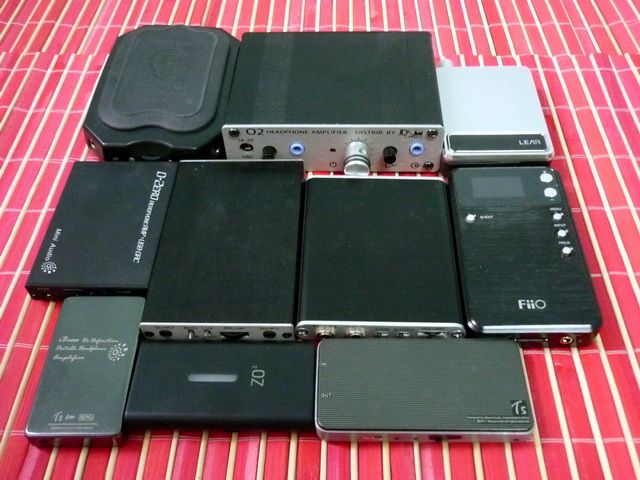
Criteria
[Power Drop]
Calculated from the data generated in the Power measurement, this percentage shows how much power is lost when switching from a 47ohm fixed load to a 25.5ohm fixed load. Ideally a lesser power drop indicates a more consistent amp’s performance between different load situations. It also shows the direct negative impact on power delivery caused by higher output impedance.
[Output Impedance]
Calculated from the voltage difference between no-load and a 47 ohm fixed load with a 1kHz pure tone. Less than 1 ohm is best for most IEM as it has the best dampening and doesn’t affect the FR curve of the IEM.
[Portability]
Size and weight comparison. Ratings are given as relative. From Biggest (1/5) to smallest (5/5)
[Speed]
Related to transient. Mainly about the sense of attack - especially noticeable on bass note.
[Transparency]
Not related to coloration, transparency is used as the sum of the openness and layering of the amp, which are what essential to produce the depth of the sound field
[Soundstage]
If transparency is the depth, then soundstage is used as the sum of width and separations. Together, they define the overall resolution of the amp.
[Coloration / Neutrality]
This can be either pure measurement (FR curve) or perceived difference in presentation. O2 will be the main reference here.
[EMI]
Tested using a cellphone receiving call in very close proximity.
[Hissing]
How well the amp behaves with hiss prone IEM, mainly SE530.
[Remark]
Odds and ends that are not covered on above.
● = 1 point
◎ = ½ point
○ = Zero point
i.e. ●●●◎○ = 3½ points
(In alphabetical order)
- digiZoid ZO2.3 ($119.95)
- FiiO E12 Mont Blanc ($130)
- FiiO E17 Alpen ($140)
- HeadRoom Total BitHead ($150)
- iBasso D-ZERO ($109)
- iBasso T3 ($119)
- iBasso T5 ($169)
- JDS Labs C421 – AD8620 ($189)
- JDS Labs C421 – OPA2227 ($184)
- JDS Labs Objective 2 ($144)
- Lear FSM-01 ($130)
- Leckerton Audio UHA-4 ($199)

Build Quality: ●●●●● (Beautifully finished, even with a full plastic housing)
Power: ●●●●◎ (Decently powerful)
Power Drop: 6%
Output Impedance: ●●●●○ (2Ω)
Portability: ●●●●◎ (Ultra-portable)
Speed: ●●●●○ (Decent)
Remark: The bass boosting ZO2.3 isn’t near the best sounding amp in the comparison and yet it is one of the most expensive (top at $99.95 *digiZoid has increased the price to $119.95, making ZO2.3 invalid for the sub$100 comparison). As purely an amp, ZO2.3 has a roll off bass (in Bass Level 0 setting) and doesn’t have quite the resolution compared to those that are cheaper in price. However, ZO2.3 brings something else to the table that will worth your while – the multi-level bass boost, and improved from the original ZO, the ability to take line-out signal. Though it might not be the best sounding or the most powerful amp around, it is great for adding bass to lean sounding IEM. At least for me, I tend to see it as an EQ first and an amp second. It is small so it won’t take much space, and the overall finish is pretty good. The output impedance is a bit high, but any IEM over 16 ohm shouldn’t be a problem at all. However, I won’t use it with IEM of very low impedance (or really high sensitivity) as hissing can become more noticeable.
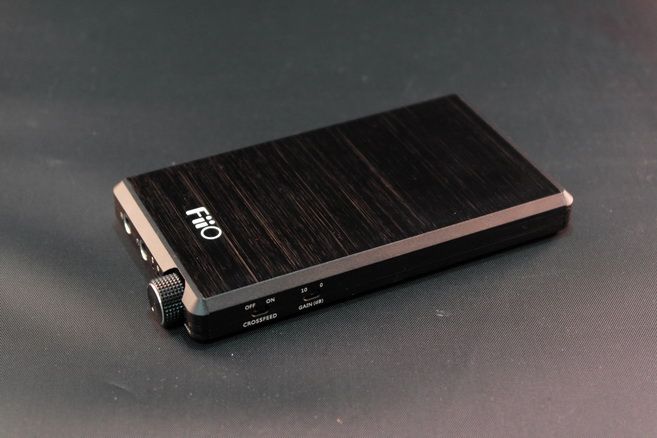
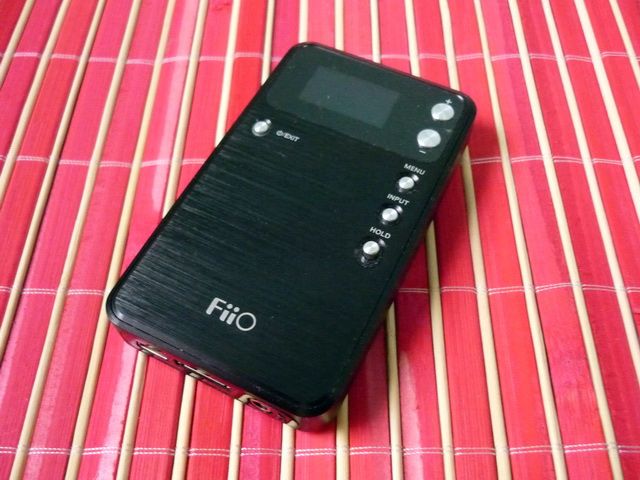
Build Quality: ●●●●● (Solid design with good functionality)
Power: ●●●●● (Plenty)
Power Drop: 3.9%
Output Impedance: ●●●●● (0.6 Ω)
Portability: ●●○○○ (Full size)
Speed: ●●●●◎ (tiny bit softer in kick but really good overall)
Transparency: ●●●●○ (decent)
Soundstage: ●●●●○ (decent)
Coloration / Neutrality: ●●●●◎ (Warmish and slightly forward, but not nothing major to complain about)
EMI: ●●●●● (dead silence)
Hissing: ●●●●● (Very very minor, only detectable in high volume)

HeadRoom Total BitHead (from sub-$100 shootout)
Build Quality: ●●●●● (Like a tank)
Output Impedance: ●●◎○○ (5.4Ω)
Portability: ●○○○○ (Larger than typical full size)
Speed: ●●●●◎ (Good speed, though impact is slightly weak)
Transparency: ●●●●○ (Decently deep)
Soundstage: ●●●●◎ (Fairly good)
Coloration / Neutrality: ●●●◎○ (Rolling off at the bass’ end with a 16ohm load is not a good thing)
EMI: ●○○○○ (Really bad)
Hissing: ●●◎○○ (Rather bad)
Remark: Like PA2V2, the Total AirHead (TA, and TBH in this case) is an old design. For whatever reason, HeadRoom doesn’t seem to want to update the design for the new generation of IEM that are much more efficient and probably trickier to drive. The good news first – 1) TA is the only amp in the comparison with a crossfeed circuit. I have had other portable amps with crossfeed before and the implementation on TA (TBH) is by far the best in creating a very relaxing, natural, binaural-like listening effect. 2) The TA, as well as the Total BitHead (which is what steps in for TA here), is built like a tank. It might be a full plastic + rubber construction, the design is very much foolproof. The use of 4 AA batteries also means this amp will last almost forever as opposed to the Li-ion battery used on other amps. But it does come with the price of overall portability. 3) Transparency and soundstage are quite good, despite the other problems I’ll mention below.
Now comes the bad news – 1) the high output impedance means any headphone under 40 ohm (following the 8x rule) will not be ideal for the amp. In fact, most of the sensitive multi-driver IEM with crossover circuit will probably sound quite colored. 2) Result of rolloff under 100dB (to -3dB @ 20Hz) with a 16 ohm test load is an indication of too small an output caps. It is not as bad as ZO2.3 in flat EQ mode, but at least ZO2.3 has bass boost to bring back (and excel) the bass. 3) Under RMAA testing, TA’s (and TBH’s) performance worsens with lower impedance load. While it still has more than enough power, it seems to indicate that the amp is having trouble keeping the same performance when impedance is too low. All and all, the result of the tests is pointing toward the conclusion that TA (and TBH) is just not an IEM friendly amp. This won’t be surprising if we consider that there aren’t quite as many IEM users around when the TA (and TBH) was designed. Like PA2V2, it is an outdated design for the current market and is costing too much to be considered a good buy. 4) The USB DAC section in TBH isn’t nearly as nice sounding as many other cheaper options available today. Any other amp/DAC in this shootout will probably make for a much better purchase easily.
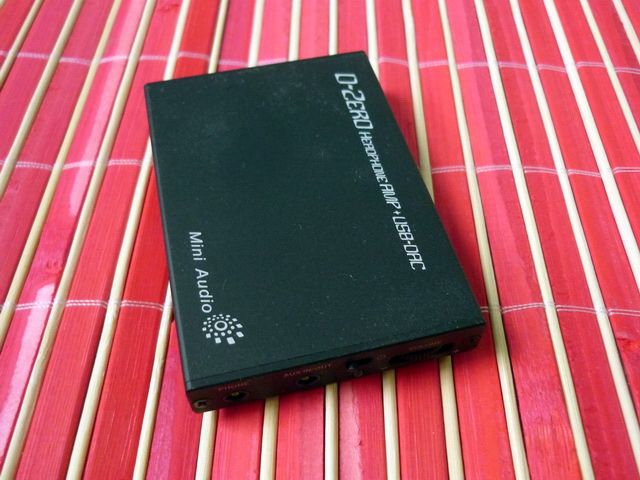
iBasso D-ZERO
Build Quality: ●●●●● (Simplicity and well fabricated)
Power: ●●●●● (Second most powerful)
Power Drop: 1.4%
Output Impedance: ●●●●● (0.5 3Ω)
Portability: ●●●●○ (Small)
Speed: ●●●●○ (decent speed, slightly slow on attack)
Transparency: ●●●◎○ (A little short in depth)
Soundstage: ●●●●◎ (Good)
Coloration / Neutrality: ●●●●○ (Clean with a fainted sense of warm. Bass rolls off with low impedance load)
EMI: ●●●●◎ (very low but detectable)
Hissing: ●●●●● (dead silence)
Remark: Intended as the ‘FiiO E7 Killer’, D-zero does offer a better sound than the former. But that should be expected since it is >$20 more expensive than E7 and offer less features. By itself, D-zero is decently well rounded. Used as USB DAC, it can get slightly brighter but shouldn’t be a big problem as long as it isn’t paired with an already bright sounding headphone. The sub-bass (under 100Hz) however does roll-off with low impedance load (-3.5dB with 16ohm load), indicating that the use of output capacitors with too small of capacitance. It would have been a great amp/DAC choice and a true E7 killer if it is under $100. But given D-ZERO cost up to $125 shipped from iBasso, it is too close to the better sounding and feature-rich E17 ($140 shipped) to have any comfort. As a pure amp, it also doesn’t offer any advantage over its older sibling, the T3 or the cheaper FiiO E11. As an USB DAC however, D-ZERO offers a good, clean sound, which is where D-ZERO’s true value is, especially since the line-in also double as a line-out when D-ZERO is used as USB DAC. Overall, the asking price put D-ZERO in an awkward place where is it a bit too expensive to compared to the cheaper stuff yet it is not good enough to compare to the more expensive stuff. Even so, it still makes Total BitHead looks totally over-priced and out-dated.
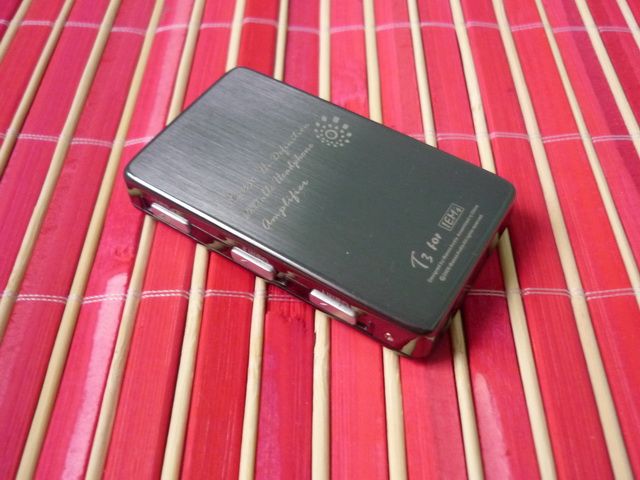
iBasso T3
Build Quality: ●●●●○ (Decent but can be better)
Power: ●●●●● (Most powerful)
Power Drop: 0%
Output Impedance: ●●●●● (0.5 Ω)
Portability: ●●●●◎ (Ultra-portable)
Speed: ●●●●◎ (Good, missing just a tiny bit of the deep kick)
Transparency: ●●●●◎ (Good)
Soundstage: ●●●●○ (decent)
Coloration / Neutrality: ●●●●◎ (Mostly neutral with slight brightness and a sense of leanness)
EMI: ●●●●◎ (very low but detectable)
Hissing: ●●●●◎ (Very minor, almost inaudible))
Remark: One of the slimmest of the batch yet offers really solid power (in fact, highest into a 47ohm load used in testing and most consistent into a 25.5ohm load). T3 can sound a bit lean and sterile for those who are looking to add weight and body to their music by amping, but technically it is still very good. As an ultra-portable, there is really not much to complain about with such a good performance.

iBasso T5
Build Quality: ●●●○○ (slight disappointment)
Power: ●●●●◎ (Decently powerful)
Power Drop: 8.7%
Output Impedance: ●●●●○ (2.7 Ω)
Portability: ●●●●◎ (Ultra-portable)
Speed: ●●●●○ (Softer edge seems to be a balanced ground specialty)
Transparency: ●●●●● (well rendering of depth)
Soundstage: ●●●●○ (Decent, but still a little short in width)
Coloration / Neutrality: ●●●●◎ (Mostly neutral with a unique smoothness of balanced ground)
EMI: ●●●●● (dead silence)
Hissing: ●●●●◎ (Very minor, almost inaudible)
Remark: T5 is supposed to be the better T3 – in some way it is, but in other ways it isn’t. On the plus side, T5 has BTL ground, a type of active balanced ground similar to that used on many Meier Audio’s amp. It gives benefit of a balanced setup without the need to recable your headphone. It isn’t as good sounding as Meier Audio StepDance, but iBasso has done a great job on packing such a complex implementation into such a tiny package while still maintain a really good SQ. While it might not have the highest output to the 47ohm test load, it can still get really loud with good power into more difficult load. It would have been the perfect ultra-portable if not for some major flaws.
Now on the bad side of things – the build quality of T5 is rather mediocre. First, the rubber coating around the zinc alloy frame chipped almost as soon as I start using it. Second, the battery ballooned up and failed within a short few months. Third, the amp has really loud click-and-pop during startup and shutdown. Lastly, for an ultra-portable designed mainly for IEM, the output impedance is slightly on the higher side. As my fourth iBasso’s amps, T5 also has the worst build quality of them all. I wonder if iBasso’s intension to pack everything into such a small package has ended up costing them to cut corner in build quality. Without saying, I am disappointed.
[Update 28 Sept. 2013] iBasso has responded to user's email that T5 is unable to recharge and operate at the same time, despite failing to mention such a crucial information on its website or in the manual. It is also a much further issue that some T5 owner had reported that they T5 can be used when recharged, while a few also reported battery failure. For these questionable build quality issues, I strongly advise against buying a T5.
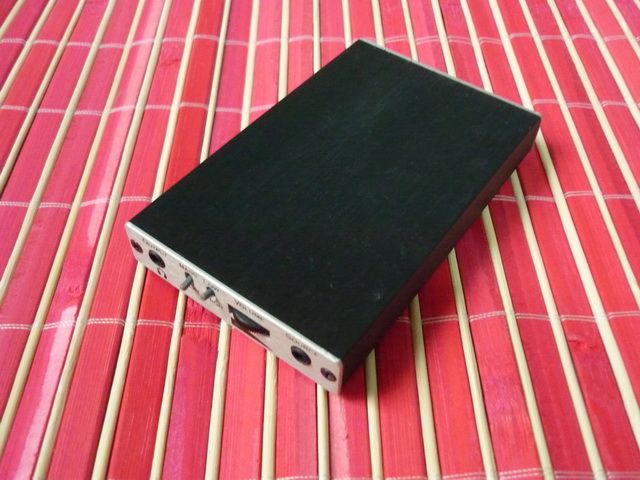
JDS Labs C421 – AD8620
Build Quality: ●●●●◎ (Very good)
Power: ●●◎○○ (Weakest of the batch)
Power Drop: 21%
Output Impedance: ●◎○○○ (10.7 Ω)
Portability: ●●○○○ (Full size)
Speed: ●●●●● (Almost as good as O2)
Transparency: ●●●●● (Will give it half a mark more if I can)
Soundstage: ●●●●◎ (Good)
Coloration / Neutrality: ●●●●● (Almost as good as O2, almost)
EMI: ●●●●● (dead silence)
Hissing: ●●●●● (dead silence)
Remark: C421 with AD8620 is by far the best sounding amp after O2 in the batch. Sonically there is nothing bad to speak of – clean, neutral, well balanced and specious. It goes particularly well with IEM, especially Etymotic ER4S, as it can render depth in the most spectacular way. The JDS signature bass boost also helps a lot. Measurement wise, it is almost flawless as well – except in one particular area, the high output impedance, which also makes it to have the worst power delivery into a low impedance load of all the amps in review. It still has enough, but obviously it could have been a lot better. High output impedance generally give two problems: first, low electronic dampening. Second, coloration to the headphone. The good news is, coloration doesn’t seem to be a problem for C421 as it still measured perfectly flat with low impedance IEM. Of course, you still won’t get much dampening out of it. Without the high output impedance, this would have been the best $200 amp around, both sonically and technically.

JDS Labs C421 – OPA2227
Build Quality: ●●●●◎ (Very good)
Power: ●●◎○○ (Weakest of the batch)
Power Drop: 21%
Output Impedance: ●◎○○○ (10.8 Ω)
Portability: ●●○○○ (Full size)
Speed: ●●●●● (Almost as good as O2)
Transparency: ●●●●○ (decent)
Soundstage: ●●●●◎ (Really good, but lack a sense of openness)
Coloration / Neutrality: ●●●●◎ (Really good, but slightly forwarded)
EMI: ●●●●● (dead silence)
Hissing: ●●●●● (dead silence)
Remark: C421 with OPA2227 shares almost all the good and bad of C421-AD8620. Afterall, the two are the same except for the opamp. In comparison, OPA2227 offers a richer, more upfront presentation over the higher resolution on sonic space of AD8620. Musicality over precision, if you like. Beyond that, C421 with OPA2227 is still a very capable amp.
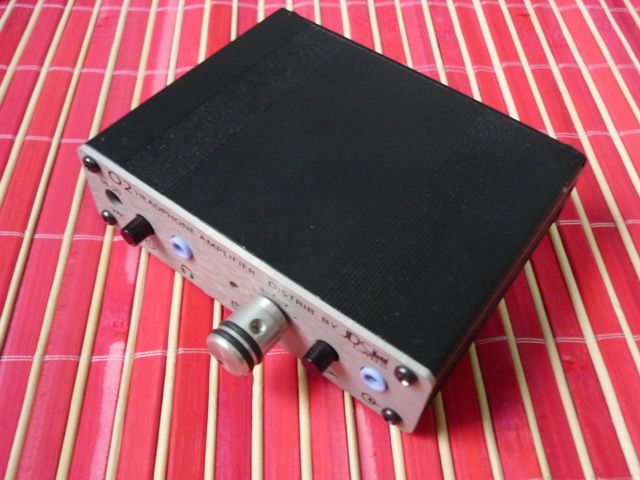
JDS Labs Objective 2
Build Quality: ●●●●◎ (Very good)
Power: ●●●●● (Plenty)
Power Drop: 0.6%
Output Impedance: ●●●●◎ (1.1 Ω)
Portability: ◎○○○○ (More transportable than portable)
Speed: ●●●●● (reference)
Transparency: ●●●●● (reference)
Soundstage: ●●●●● (reference)
Coloration / Neutrality: ●●●●● (Perfectly colorless)
EMI: ●●●●◎ (very low but detectable)
Hissing: ●●●●● (dead silence)
Remark: Designed via measurement, O2 is the reference amp of the whole shootout and offers the best SQ subjectively and objectively. It has the best blend of everything, as far as sound being the only concern. But as an amp designed solely to achieve maximum SQ, the practicality side of the amp does suffered a bit. First, the size and weight are closer to a transportable rather than a portable amp. Second, the use of non-standard power supply / charger makes it much less viable as a traveler choice. In fact, it is the only other amp besides Total BitHead (which isn’t rechargeable anyway) that doesn’t take an USB connection for power / recharge. The less-than-easily accessible batteries compartment also means that, even when using regular non-rechargeable 9V when travelling, you still need to carry a screw driver around. Overall, O2 is more like a desktop amp that can go mobile, rather than a truly portable amp in spirit.
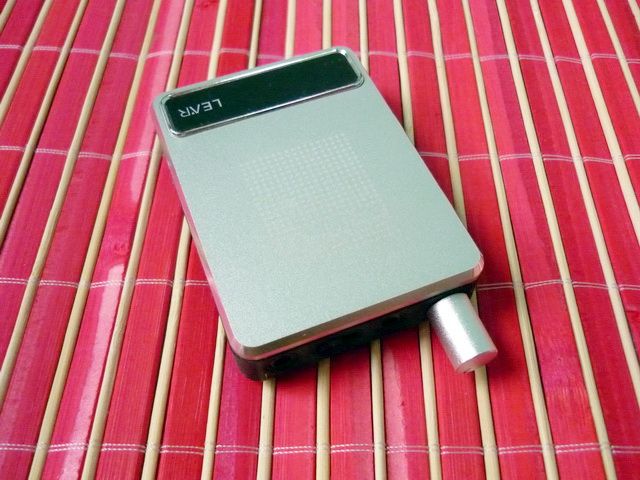
Lear FSM-01
Build Quality: ●●●●○ (Decent but can be better)
Power: ●●●●◎ (Decently powerful)
Power Drop: 4.2%
Output Impedance: ●●●●● (0.55Ω)
Portability: ●●◎○○ (Almost full size)
Speed: ●●●◎○ (Not bad, but does feel a little slower than it should)
Transparency: ●●●●◎ (Good depth rendering)
Soundstage: ●●●◎○ (Not bad, but not particularly wide too)
Coloration / Neutrality: ●●●●◎ (Very clean on the slightly leaner sounding side)
EMI: ●○○○○ (Really bad)
Hissing: ●●◎○○ (Rather bad, worsen with higher gain)
Remark: FSM-01 is a good sounding amp with some problem of its own. Before O2, this would have been one of the most transparent amps under $150. The main issues with FSM-01 are the high level of hiss and non-resistant to EMI, which makes it a less practical option these days when many use smartphone as source. With O2 only costing less than $15 more, FSM-01 just doesn’t seem that attractive anymore.
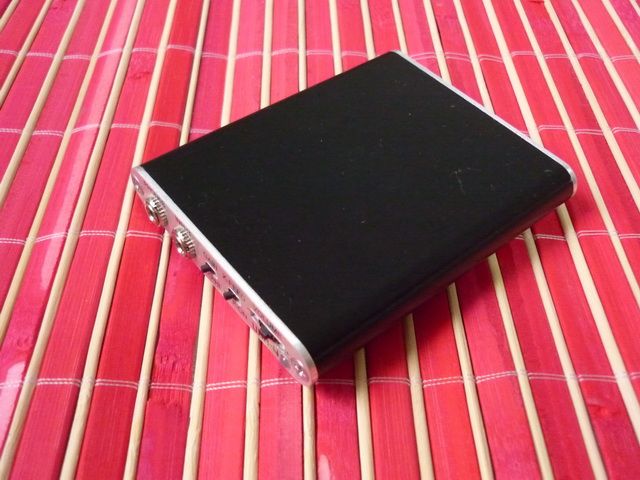
Leckerton Audio UHA-4 with OPA209
Build Quality: ●●●●● (Excellent)
Power: ●●●●● (Plenty)
Power Drop: 1.6%
Output Impedance: ●●●●● (0.1 Ω)
Portability: ●●●●○ (Slim but wide)
Speed: ●●●●● (Excellent)
Transparency: ●●●●◎ (Good)
Soundstage: ●●●●◎ (Good)
Coloration / Neutrality: ●●●●● (Really neutral, somewhere between the two C421)
EMI: ●●●●○ (Low)
- JDS Labs Objective 2
- JDS Labs C421-AD8620 / Leckerton Audio UHA-4(OPA209)
- JDS Labs C421-OPA2227 / FiiO E12 Mont Blanc
- iBasso T5
- Lear FSM-01 / Fred_fred_2004’s 3 Channels Headphone Amp
- FiiO E17 Alpen / iBasso T3 / FiiO E11
- iBasso D-ZERO / JDS Labs cmoyBB v2.02
- digZoid ZO2.3 / Electric Avenues PA2V2 / FiiO E07K
- FiiO E6 / FiiO E02i
- FiiO E7 / SoundMAGIC A10
- HeadRoom Total BitHead / HeadRoom Total AirHead
- Again, amps are all volume matched using a SPL meter during the review.
- No amp is perfect. Best sounding amp doesn’t equal to the most practical amp. You’ll need to decide what feature is most important to you and go from there.
- Big thanks to JDS Labs for the C421-OPA2227 loan unit.





